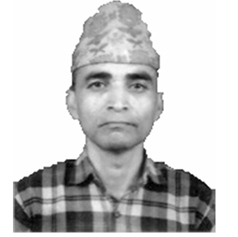Expediting Local Development

Khilendra Basnyat
Nepal's physical divisions into plains, hills and mountains seem to have influenced the imbalance in local development and its benefits to the local people. The complicated terrain crisscrossed by mountain ranges, rivers and forests has not only isolated the villages, districts and regions from but also hampered local development activities. The hill region is about a century behind to its development perspective. The reason for it seems to be poor technological development, inadequate means of production, shortage of skilled manpower and low degree of political awareness.
Opportunities
After the completion of the election of the local levels, the local development scenario of Nepal faced new challenges and strategies. Actually, such levels are the key actors of local development because the new constitution has offered them an important opportunity to exercise their authorities and responsibilities in a befitting manner. However, it takes a lot of time and energy to upgrade the capacities of these local bodies to respond to the local needs and priorities effectively.
Actually, in order to expedite local development, plans should be made more effective by initiating a bottom up and participatory approach in planning, implementation, monitoring and evaluation of development programmes. Such plans should especially focus on programmes on rural poor and socially disadvantaged people, who are living in remote parts of the country, facing various kinds of problems just to maintain their livelihood.
In fact, the real need for action for local development is the coordinated planning and the multi-sectorial approach in development. In the past, in some local bodies, integrated development schemes based on local initiatives showed some positive results in a few community organisations and poverty reduction through social mobilisation. No doubt, the participation of some non-governmental and bilateral projects in these bodies also added some synergy to initiate and sustain community-based development programmes on agriculture, forestry, rural energy, rural water supply, health and sanitation. However, the outcome was not as satisfactory as expected because the standard of living of the local people could not be raised.
To accelerate local development in Nepal, the existing local resources should be used effectively for which it is essential to build partnership with all the stakeholders for planning and action. Also, regular review of the progress and difficulties faced in the joint efforts of the concerned authorities will help formulate better plans.
The rural to urban migration is high here. In addition, a high proportion of the youth population has an increasing trend of seasonal migration to other countries for employment. Such trend of migration undoubtedly affects local development; therefore, local employment generation plans should be made to check such a trend. A high percentage of the population in Nepal still resides in rural areas where agriculture is the main occupation. Since the adoption of new farming technology helps increase agricultural productivity, special emphasis should be placed on agricultural development for local development.
According to a report of the International Fund for Agricultural Development, about 40 per cent of the total amount of the remittance flow is directed to rural areas. This amount, if utilised in the productive sector, can speed up local development. Remittance can be powered through incentives that secure migrants' rights by allowing them to utilise their earnings in local development; therefore, development projects need to be based on local people's requirements and financial resources customised.
In fact, local development can be accelerated if remittance can be invested in infrastructures development and productive sectors. For this purpose, policies and programmes should be made with local people's participation. Although cooperatives are productive and commercial organisations, they are not limited to pursuing financial gain. They are also helpful to raise the people's standard of living by providing financial services to the local people.
The cooperatives have a significant role to play in local development, and the degree to which they have so far succeeded in local people's needs to be increased to enable to carry out the works entrusted to them. In practice, the operation and management of the cooperatives in Nepal are under the control of the members and the organising officials. Since cooperatives belong to their members, their role is very significant for their development.
Women’s participation
In many places, women's participation in local development activities is far from satisfactory. If the available women's labour can be utilised in productive sectors, they can greatly contribute to local development. In order to help women in local development works through cooperatives, women's cottage and local Industries cooperative organisations should be established in all districts. In addition, programmes should be conducted to sell better quality consumer goods through cooperatives. In fact local development is about improving the welfare of the local people. Its needs are dictated by local physical conditions rather than ideologies. Moreover, since local leaders and people have a significant role to speed up local development, they should be creative and pro-active in this regard.
(Basnyat is a freelance writer.)
Recent News

Do not make expressions casting dout on election: EC
14 Apr, 2022
CM Bhatta says may New Year 2079 BS inspire positive thinking
14 Apr, 2022
Three new cases, 44 recoveries in 24 hours
14 Apr, 2022
689 climbers of 84 teams so far acquire permits for climbing various peaks this spring season
14 Apr, 2022
How the rising cost of living crisis is impacting Nepal
14 Apr, 2022
US military confirms an interstellar meteor collided with Earth
14 Apr, 2022
Valneva Covid vaccine approved for use in UK
14 Apr, 2022
Chair Prachanda highlights need of unity among Maoist, Communist forces
14 Apr, 2022
Ranbir Kapoor and Alia Bhatt: Bollywood toasts star couple on wedding
14 Apr, 2022
President Bhandari confers decorations (Photo Feature)
14 Apr, 2022










